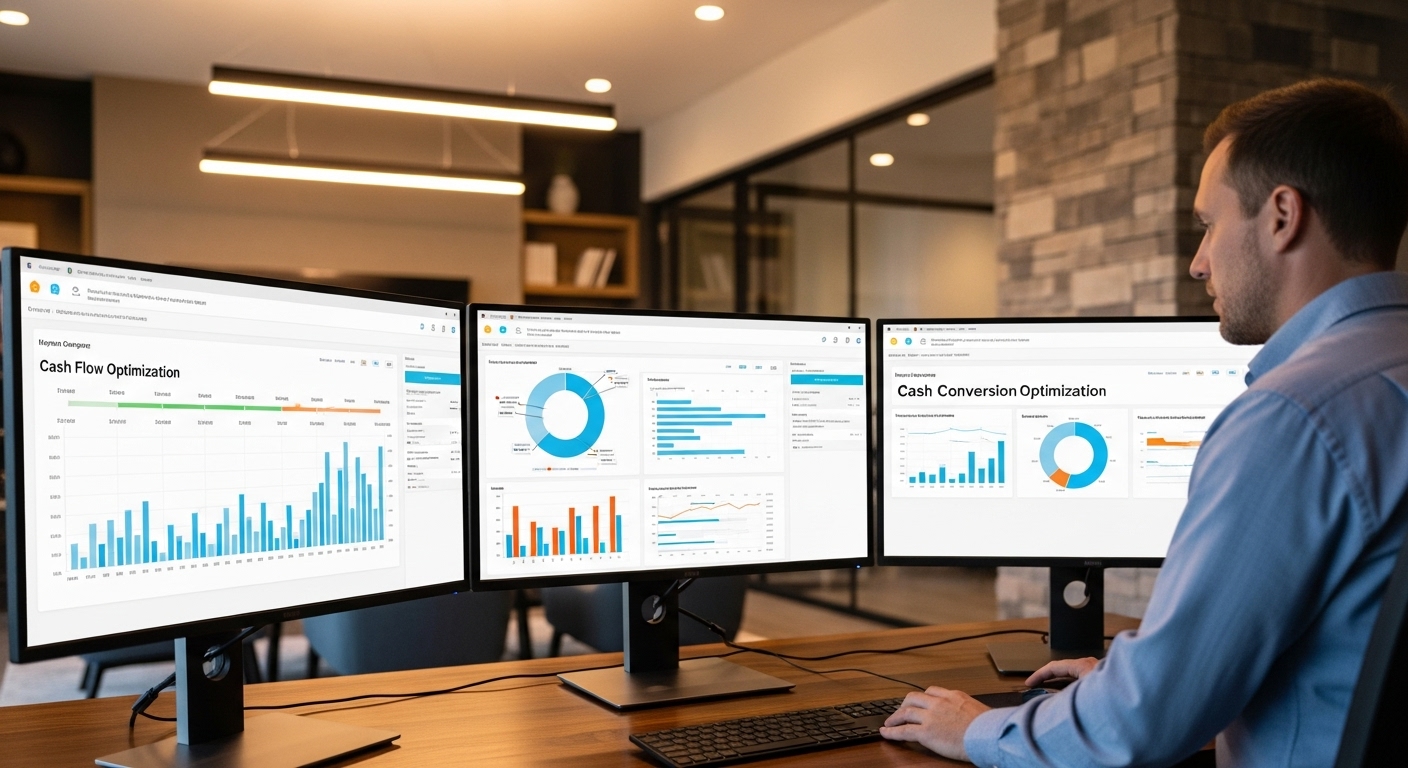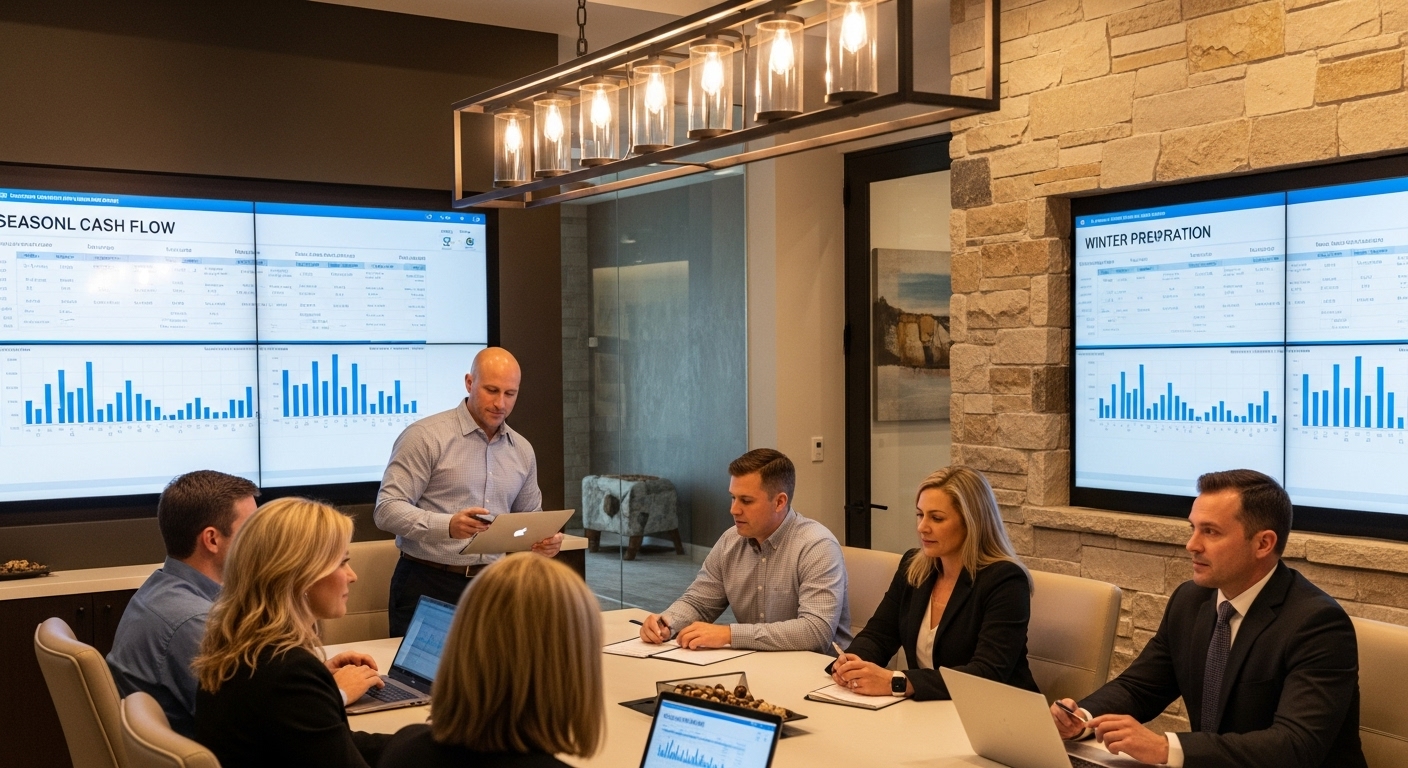August 20, 2025 by 100XBuilds Team
Working Capital Optimization: Cash Conversion Strategies

A $12M luxury builder reduced their cash conversion cycle from 180 days to 95 days, freeing up $2.8M in working capital that funded three additional spec homes without external financing. Here's the exact framework they used.
Working capital optimization isn't just accounting theory—it's the difference between builders who scale confidently and those who constantly scramble for cash. When you're managing $5M+ in annual revenue with projects spanning 8-18 months, every day in your cash conversion cycle costs you real money and growth opportunities.
The Hidden Cost of Poor Cash Conversion
Most luxury builders focus on gross margins while ignoring the silent profit killer: inefficient working capital management. Consider this reality check:
A typical luxury builder with $8M annual revenue:
- Average project value: $1.2M
- Cash conversion cycle: 165 days
- Working capital tied up: $3.6M
- Cost of capital at 8%: $288,000 annually

That's nearly $300,000 in opportunity cost—enough to fund another luxury project or expand into new markets. The builders who master cash conversion cycles don't just survive market downturns; they acquire distressed competitors.
Deconstructing Your Cash Conversion Cycle
Your cash conversion cycle consists of three critical components that most builders track poorly:
Days Inventory Outstanding (DIO): Time from material purchase to project completion
Days Sales Outstanding (DSO): Time from project completion to cash collection
Days Payable Outstanding (DPO): Time you take to pay suppliers and subcontractors
The formula is simple: DIO + DSO - DPO = Cash Conversion Cycle
But the optimization strategies require surgical precision.
Inventory Optimization: The $500K Opportunity
Luxury builders typically carry 15-25% more inventory than necessary due to poor demand forecasting and supplier relationship management. A $10M builder can easily have $500K in excess inventory sitting in warehouses and job sites.
Strategic inventory reduction tactics:
Just-in-time delivery partnerships: Negotiate with key suppliers for weekly deliveries instead of bulk orders. One builder reduced lumber inventory by 40% while maintaining zero stockouts.
Shared inventory pools: Partner with 2-3 non-competing builders to share specialty item inventory. Split costs on expensive items like high-end fixtures and appliances.
Digital inventory tracking: Implement barcode systems that track material usage by project phase. This prevents over-ordering and identifies theft patterns that can cost 3-5% of material budgets.

Project-specific procurement: Order materials based on actual construction schedules, not estimated timelines. This alone can reduce inventory holding by 20-30 days.
Accelerating Collections: From 45 Days to 15 Days
The collections component offers the fastest wins in cash conversion optimization. Luxury clients have the cash—they just need proper incentive structures and streamlined processes.
Payment Structure Engineering
Progressive milestone payments: Structure payments around actual completion percentages, not calendar dates. This protects cash flow from construction delays while maintaining client relationships.
Early payment incentives: Offer 2-3% discounts for payments received within 10 days of invoicing. The cost is far less than carrying debt or missing opportunities.
Automated invoicing systems: Send invoices the day milestones are completed, not at month-end. This simple change can reduce DSO by 10-15 days.
Digital payment processing: Accept ACH transfers and wire payments to eliminate check processing delays. One builder reduced average collection time from 28 days to 12 days with this change alone.

Client Communication Protocols
Weekly progress reports: Include payment schedules and upcoming milestones in every client communication. This eliminates surprise invoices and payment delays.
Dedicated project accountants: Assign specific team members to handle collections for high-value projects. Personal relationships accelerate payments significantly.
Legal partnership agreements: Establish relationships with construction attorneys who can quickly resolve payment disputes without damaging client relationships.
Strategic Payables Management: The Balancing Act
Extending payables improves cash flow, but damaging supplier relationships destroys long-term profitability. The key is strategic extension with mutual benefit.
Supplier Partnership Optimization
Volume-based payment terms: Negotiate extended terms (45-60 days) in exchange for guaranteed annual volumes. This works especially well with specialty suppliers.
Early payment discounts: Take advantage of 2/10 net 30 terms when cash flow allows. The annualized return often exceeds 36%.
Seasonal payment adjustments: Arrange extended terms during slow seasons in exchange for faster payments during peak periods.
Performance-based extensions: Link payment terms to delivery performance and quality metrics. This incentivizes better service while improving cash flow.

Technology Integration for Cash Flow Visibility
Manual cash flow tracking is financial suicide for luxury builders. The complexity of multiple projects, varying timelines, and seasonal fluctuations requires sophisticated systems.
Essential Technology Stack
Integrated project management: Connect scheduling software directly to accounting systems. When project phases complete, invoices generate automatically.
Cash flow forecasting tools: Use AI-powered systems that predict cash needs 90-120 days in advance based on historical project data and current pipeline.
Supplier portal integration: Allow suppliers to submit invoices and track payments through integrated portals that sync with your accounting system.
Client payment portals: Provide clients with online access to project progress, upcoming milestones, and payment options. This transparency accelerates collections significantly.
Seasonal Cash Flow Management
Luxury construction follows predictable seasonal patterns that smart builders exploit for working capital optimization.
Winter Preparation Strategy
Q4 collections acceleration: Offer year-end completion bonuses to clients who accelerate final payments. Many high-net-worth individuals prefer tax-year expense recognition.
Supplier payment deferrals: Negotiate January payment terms for December deliveries. Most suppliers prefer steady cash flow over immediate payment.
Inventory reduction: Complete material-intensive phases before winter slowdowns to minimize carrying costs during low-activity periods.

Spring Scaling Preparation
Credit line optimization: Secure additional credit facilities during strong cash positions, not when you need them. Banks prefer lending to cash-positive builders.
Supplier relationship investments: Use winter months to negotiate better terms and establish new supplier relationships for spring scaling.
Project pipeline financing: Structure new project starts to align with improved cash positions from completed winter projects.
Advanced Working Capital Strategies
Elite builders use sophisticated strategies that go beyond basic cycle optimization.
Project Portfolio Balancing
Staggered completion schedules: Plan project completions to create steady monthly cash inflows rather than quarterly lumps.
Spec home integration: Use spec homes as cash flow buffers during custom project gaps. The faster turnover improves overall cycle metrics.
Renovation project mixing: Integrate shorter-cycle renovation projects to maintain cash flow during long custom builds.
Financial Partnership Leverage
Supplier financing programs: Partner with suppliers who offer project-specific financing for materials. This effectively removes inventory from your working capital calculation.
Client financing facilitation: Establish relationships with construction lenders who can provide client financing, accelerating your payment cycles.
Joint venture structures: Partner with other builders on large projects to share working capital requirements while maintaining profit margins.

Measuring and Monitoring Performance
What gets measured gets optimized. Establish these key performance indicators for continuous improvement:
Weekly cash position reports: Track actual vs. projected cash positions with 13-week rolling forecasts.
Project-specific cycle analysis: Calculate working capital efficiency for each project type to identify optimization opportunities.
Supplier performance metrics: Track payment terms utilization and early payment discount capture rates.
Collection efficiency ratios: Monitor DSO trends by project type and client segment to identify improvement opportunities.
Implementation Roadmap
Week 1-2: Audit current cash conversion cycle components and establish baseline metrics.
Week 3-4: Implement automated invoicing and digital payment processing systems.
Week 5-8: Negotiate improved supplier payment terms and establish inventory optimization protocols.
Week 9-12: Deploy cash flow forecasting tools and establish weekly monitoring routines.
Ongoing: Continuously optimize based on performance data and market conditions.
The builders who master working capital optimization don't just improve cash flow—they create sustainable competitive advantages that compound over time. While competitors struggle with cash constraints, optimized builders scale confidently and acquire market share during downturns.
Ready to transform your cash conversion cycle from a constraint into a competitive weapon? Our working capital optimization specialists have helped luxury builders free up over $50M in trapped capital. Schedule your cash flow analysis today and discover exactly how much working capital you're leaving on the table.
